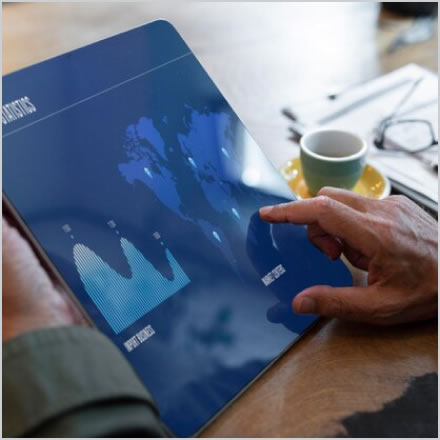In the digital age where transactions zip across borders at lightning speed, ensuring their security, authenticity, and compliance has never been more paramount. At the heart of this safeguarding process lies transaction monitoring. Simply put, transaction monitoring is the continuous and real-time review of financial transactions to detect anomalies, potential fraud, and other illicit activities.
With a relentless surge in digital transactions, coupled with an increasingly complex regulatory environment, organizations are faced with the dual challenge of facilitating ease of transaction for legitimate users while guarding against malicious entities.
Beyond security, transaction monitoring plays a pivotal role in enhancing user trust. As financial fraud becomes increasingly sophisticated, the importance of robust transaction monitoring systems increases. In the hyper competitive world of banking, where reputation can be built or shattered in moments and regulatory penalties can cripple operations, an effective transaction monitoring system isn’t just an added benefit—it’s an imperative.
As we dive deeper into the nuances of transaction monitoring in this article, we’ll uncover why it’s a must have, from detecting red flags to the intricacies of Anti-Money Laundering (AML) measures and more.
Table of Contents
- What are the Red Flags in Transaction Monitoring?
- What are the risks of ineffective Transaction Monitoring?
- What are transaction monitoring tools?
- What makes a good transaction monitoring system?
- The role of transaction monitoring systems in AML
- Anti-Fraud vs. AML Transaction Monitoring
- How Does Transaction Monitoring Software Work?
- What are the benefits of Transaction Monitoring software
- Key Features to Look for in Transaction Monitoring Software
- Transaction Monitoring Software: Tips on Deploying it
What are the Red Flags in Transaction Monitoring?

In the world of transaction monitoring, the term “red flags” refers to warning signs or indicators that suggest potential irregularities or suspicious activities within a transaction. Recognizing these red flags is critical in the transaction monitoring process to ensure compliance with money laundering regulations and to implement a risk-based approach to financial security.
Several common examples of suspicious transaction patterns include:
High-frequency Transactions
Multiple transactions happening in quick succession, especially if they’re just below reporting thresholds.
Mismatched Profiles
Transactions that don’t align with a customer’s known profile or behavioral patterns.
Rapid Movement of Funds
Funds swiftly moved between accounts or across borders without a clear business rationale.
Round-dollar Transactions
Transactions made in rounded figures repetitively, which might indicate attempts to evade transaction monitoring rules.
Inconsistent Business Transactions
Transactions that are inconsistent with the nature of the business or its typical volume.
By diligently observing and responding to these red flags, organizations can bolster their defenses against illicit activities and ensure that their transaction monitoring process aligns with the ever-evolving landscape of money laundering regulations and risk-based strategies.
Secure Payments & Anti-fraud Solutions
What are the risks of ineffective Transaction Monitoring?

Ineffective transaction monitoring can expose businesses, especially financial institutions, to a myriad of risks that have both tangible and intangible ramifications:

Operational Risks
A flawed AML transaction monitoring system can lead to inefficiencies in spotting unusual activities. This can result in false positives, which unnecessarily tie up resources, or false negatives, letting malicious transactions slip through. For example, not detecting a high volume of suspicious credit card transactions can lead to significant financial losses.

Compliance and Regulatory Risks
Financial institutions operate in a stringent regulatory environment. Inadequate transaction monitoring can result in non-compliance with due diligence requirements and other regulations. The penalties for such oversights can be severe, ranging from hefty fines to operational restrictions or license revocations.

Reputational Risks
A single oversight in AML transaction monitoring can lead to publicized breaches or scandals, tarnishing the reputation of institutions. Once damaged, reputation can take years to rebuild, leading to loss of clientele and potential business opportunities.
For financial institutions, ensuring a robust and responsive transaction monitoring system is not just about avoiding pitfalls; it’s about upholding the integrity and trustworthiness of their operations in a complex financial landscape.
What are transaction monitoring tools?

Transaction monitoring tools are specialized software or systems designed to oversee and analyze financial transactions in real-time or retrospectively. Their primary goal is to ensure that all transactions align with expected patterns, adhere to a risk-based approach, and promptly identify suspicious activities that might indicate fraud or money laundering.
Different types of transaction monitoring tools available include:

Real-time Monitoring Tools
These tools scrutinize transactions as they occur, providing instant alerts if anomalies are detected. They’re crucial for industries where timely detection is paramount, such as in credit card processing or online banking.

Batch Monitoring Tools
Unlike real-time tools, batch monitoring processes transactions in groups, usually at the end of the day. They’re used by institutions that can afford a slight delay in detection for a more comprehensive analysis.
Rule-based Systems
These tools operate based on predefined rules, often set to align with regulatory requirements. Any transaction that violates these rules triggers an alert.
By leveraging the right mix of these tools, organizations can effectively combat the risks of money laundering, ensuring that they’re not only compliant but also resilient against emerging financial threats.
What makes a good transaction monitoring system?

A good transaction monitoring system stands out by being both reactive to current threats and proactive against emerging ones. Here’s what sets the gold standard:

Robust Detection Capabilities
Transaction monitoring software should be adept at pinpointing irregularities. Whether it’s spotting patterns indicative of money laundering or other financial crimes, a system’s primary goal is to identify and alert on anomalies in customer transactions.

Adaptability
Financial crime strategies evolve, and so should monitoring systems. The best transaction monitoring software can adapt to new patterns and behaviors, ensuring they’re not caught off-guard by innovative schemes.

Scalability
As businesses grow, the volume and complexity of transactions increase. A top-tier system can scale alongside the business, processing larger volumes without compromising on efficiency or accuracy.

User-friendly Interface
A good system provides clear and actionable insights. This means having an interface that’s intuitive, allowing users to review, investigate, and act on alerts without unnecessary complexities.

Integration Capabilities
To effectively combat financial crime, transaction monitoring should integrate seamlessly with other tools and databases, enabling a holistic view of risks.
In the face of evolving financial crimes, a good transaction monitoring system not only detects but also anticipates. It’s an ever-watchful eye, ensuring the integrity of every financial touchpoint in an organization’s operations.
Get secure payments, anti-fraud, anti-money laundering (AML) and investigations software and services
The role of transaction monitoring systems in AML

Anti-Money Laundering (AML) is a set of procedures, laws, and regulations designed to halt the practice of generating income through illegal actions, essentially preventing the conversion of illegally gained assets into legitimate funds. In today’s interconnected financial landscape, AML compliance is more than just a regulatory mandate—it’s a cornerstone for the trustworthiness of any financial institution.
Transaction monitoring plays a pivotal role in this landscape. It acts as the first line of defense, continuously scanning and analyzing transactions to identify any patterns or activities that might suggest money laundering. When suspicious transactions are flagged, they are subjected to further scrutiny, ensuring due diligence and timely reporting to relevant authorities.
The relationship between AML and transaction monitoring is symbiotic. While AML lays down the framework and regulations that financial institutions must adhere to, transaction monitoring provides the tools and systems to achieve this compliance. Without effective transaction monitoring, AML compliance would be an arduous, if not impossible, task. Conversely, without the guidelines of AML, transaction monitoring would lack direction and focus.
In essence, transaction monitoring systems breathe life into AML, turning compliance from a theoretical concept into actionable, everyday practice in the fight against financial crime.
Anti-Fraud vs. AML Transaction Monitoring

While both anti-fraud and AML transaction monitoring processes serve to protect financial institutions and their customers from illicit activities, their primary focus and methodologies differ significantly.
Anti-Fraud Monitoring primarily aims to detect and prevent unauthorized or fraudulent transactions. This might include identity theft, account takeovers, or even credit card fraud. The emphasis is on shielding the institution and its customers from financial loss and maintaining the integrity of personal financial information.
On the other hand, AML Transaction Monitoring is specifically designed to detect and prevent money laundering and terrorist financing activities. Its focus is broader, encompassing not just fraudulent transactions but also patterns that may indicate efforts to camouflage the illegal origins of funds. A vital component of the AML transaction monitoring process is the generation of Suspicious Activity Reports (SARs), which are then submitted to regulatory bodies when anomalous activities are detected.
In a comprehensive monitoring strategy, both anti-fraud and AML measures are indispensable. While anti-fraud mechanisms ensure immediate protection against financial theft, AML measures ensure that the financial institution is not inadvertently facilitating larger, often concealed, criminal enterprises.
Together, they form a holistic approach, safeguarding both immediate financial interests and the broader socio-economic landscape from the threats of financial crimes.
How Does Transaction Monitoring Software Work?

Transaction monitoring software is a specialized tool designed to meticulously track, analyze, and report on customer transactions, ensuring they align with expected norms and do not show signs of illicit activity.
At its core, the basic functionality involves:
Data Collection
The software gathers information on all customer transactions taking place within financial institutions.
Analysis
Based on predetermined criteria, the transaction monitoring process scrutinizes each transaction for any signs of irregularity.
Alert Generation
Any deviation from the norm, whether indicative of potential fraud or in violation of AML transaction monitoring protocols, triggers alerts for further investigation.
When it comes to integration into systems, transaction monitoring software is often modular, allowing it to seamlessly merge with a financial institution’s existing infrastructure. This ensures:
- Comprehensive coverage across all transaction channels.
- Real-time or batch processing capabilities, depending on institutional needs.
- Interfacing with other software modules, enhancing the depth and breadth of the analysis.
Transaction monitoring software serves as a vigilant guardian. By continuously overseeing customer transactions and interfacing with other systems, it ensures that financial institutions stay one step ahead of illicit actors and maintain unwavering regulatory compliance.
What are the benefits of Transaction Monitoring software


Operational Efficiency
Automating the transaction monitoring process eliminates the need for manual reviews, thereby drastically reducing the time and resources spent on sifting through vast volumes of transactions. This not only speeds up operations but also reduces the potential for human error.

Enhanced Security
With sophisticated algorithms and continuously updated patterns, transaction monitoring software is adept at identifying even the most nuanced signs of illicit activities. This means a higher detection rate for activities linked to money laundering or other financial crimes.

Robust AML Compliance
Regulatory bodies globally have stringent AML requirements. The software ensures that financial institutions are consistently aligned with these regulations, identifying and flagging suspicious activities that need to be reported.

Reduced Risk
By proactively identifying and alerting on potential risks, the software allows financial institutions to act promptly, minimizing financial losses and protecting customer assets.

Reputation Management
In an era where reputation can be damaged in seconds, ensuring consistent AML compliance and security against financial crimes bolsters the trust customers place in a financial institution.
Transaction monitoring software is more than just a tool—it’s a strategic ally, enabling financial institutions to navigate the complexities of the financial world securely and efficiently.
Secure Payments & Anti-fraud Solutions
Key Features to Look for in Transaction Monitoring Software

Navigating the purchase or integration of transaction monitoring software requires an understanding of pivotal features that bolster security and compliance:
Real-time Monitoring
In today’s fast-paced financial world, the ability to detect suspicious transactions as they happen is invaluable. This feature allows for immediate action, preventing potential money laundering or other illicit activities on the spot.

Customization and Scalability
Every business has unique needs. The software should allow customization to fit specific requirements and be scalable to accommodate growth or changes in transaction volumes.
Integration Capabilities
A good system should seamlessly integrate with existing infrastructures, ensuring a holistic view of all transactions and enhanced detection capabilities.
Adaptability and Future-proofing
The world of financial crime is ever-evolving. Features that facilitate regular updates, pattern recognition, and response to new forms of money laundering or terrorist financing are crucial.
Comprehensive Reporting
An intuitive dashboard and detailed reports allow businesses to gain insights, ensure compliance, and make informed decisions.
Prioritizing these features ensures a robust defense against financial threats and a seamless AML transaction monitoring process that adapts to the future’s uncertainties.
Transaction Monitoring Software: Tips on Deploying it

Implementing transaction monitoring software is a pivotal step, but deploying it effectively is where the real challenge lies. Here are some best practices and solutions to common challenges:

Understand Your Needs
Before deployment, ensure you have a clear understanding of your business’s specific requirements. This clarity will aid in customizing the software for optimal results.

Prioritize Training
The software’s efficacy lies in its correct usage. Invest in training sessions for your staff to familiarize them with the system’s functionalities and best practices.

Regular Updates
Financial threats evolve. Regularly update the software to ensure it remains equipped to handle new patterns of money laundering or other financial crimes.

Data Integration
Consolidate and integrate data from various sources. Ensuring that the software has access to comprehensive data will improve its accuracy and detection capabilities.
Common Challenges and Solutions:
False Positives
Over-alerting can be resource-draining. Regularly review and refine the rule sets and parameters to strike a balance between vigilance and efficiency
System Compatibility
Integration issues with existing systems can arise. Choose software that’s known for its compatibility or work with your IT team to ensure smooth integration.
Regulatory Compliance
As regulations change, there’s a risk of non-compliance. Engage with regular audits and stay updated with regulatory changes to ensure continued alignment.
An effective deployment hinges on proactive management, continuous learning, and an adaptive mindset, ensuring the software remains a robust shield against financial malpractices.
Conclusion

Secure Payments & Anti-fraud Solutions
We provide secure payments, anti-fraud, and anti-money laundering software and services for banks around the world.
The digitization of finance has brought unparalleled convenience and innovation, but with it comes evolving challenges. Money laundering tactics, terrorist financing schemes, and other
financial crimes are continuously adapting, seeking out vulnerabilities in even the most fortified systems. In this dynamic environment, the efficacy of transaction monitoring is underscored, not merely for compliance, but as a vital component in maintaining the integrity of our financial systems.
But it’s essential to recognize that transaction monitoring isn’t a static solution. It’s an evolving mechanism, one that must be regularly updated, refined, and reimagined in the face of emerging challenges. As we venture further into this digital age, the symbiosis of advanced technology and vigilant human oversight will be the cornerstone upon which the safety and reliability of our financial institutions rest.
Choosing the optimal AML software demands a comprehensive assessment, considering regulatory alignment, feature richness, adaptability, and value for money. Considering the pivotal role AML software holds in contemporary banking, it’s essential to approach this decision with meticulous research and thoughtfulness. By adopting the appropriate solution, financial institutions can fortify their barriers against money laundering, guaranteeing both adherence to regulations and peace of mind for stakeholders.
